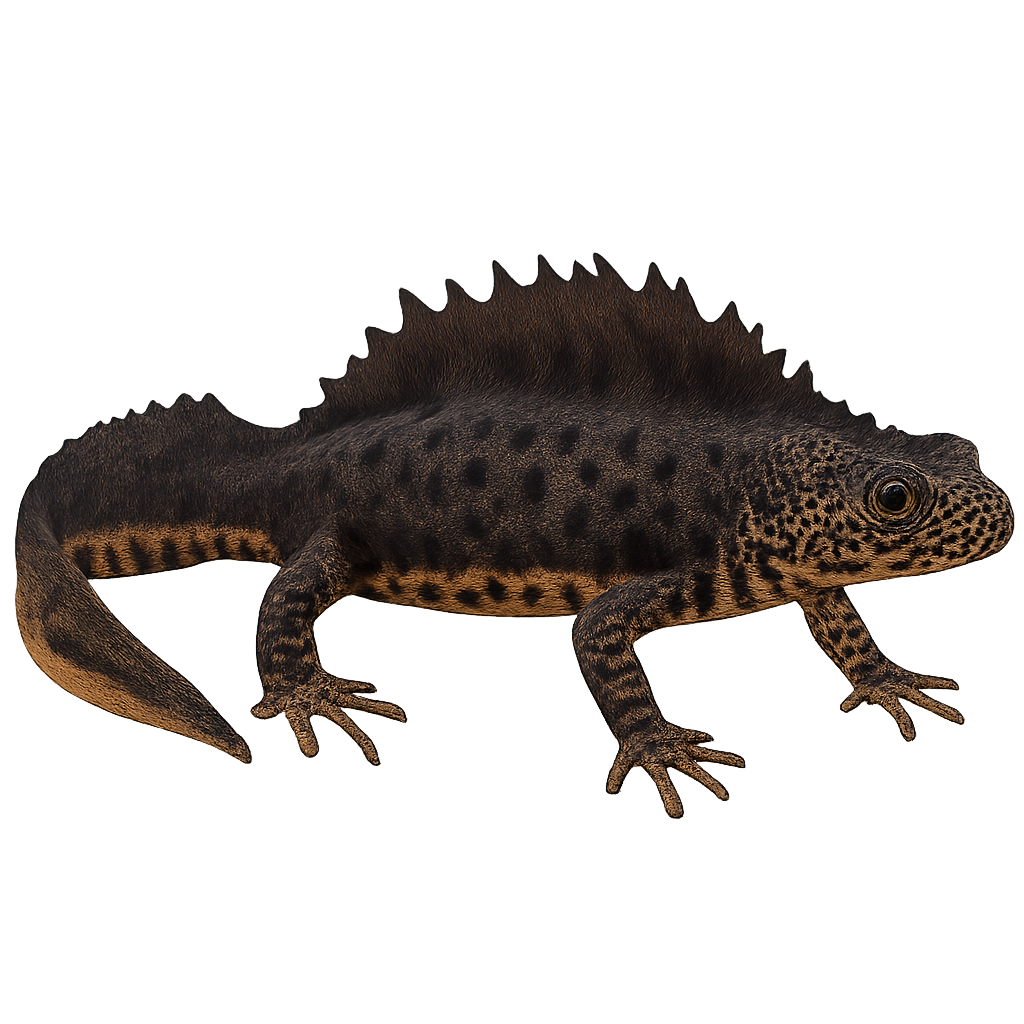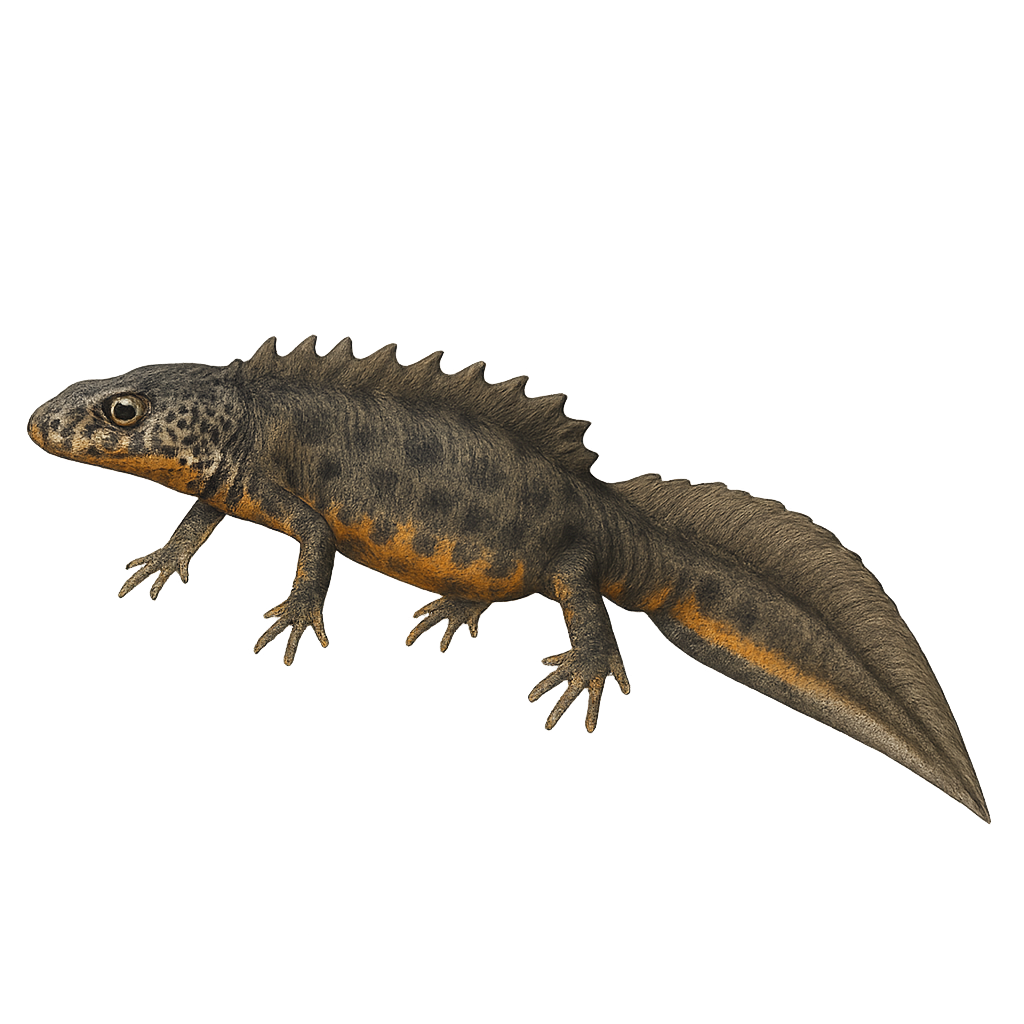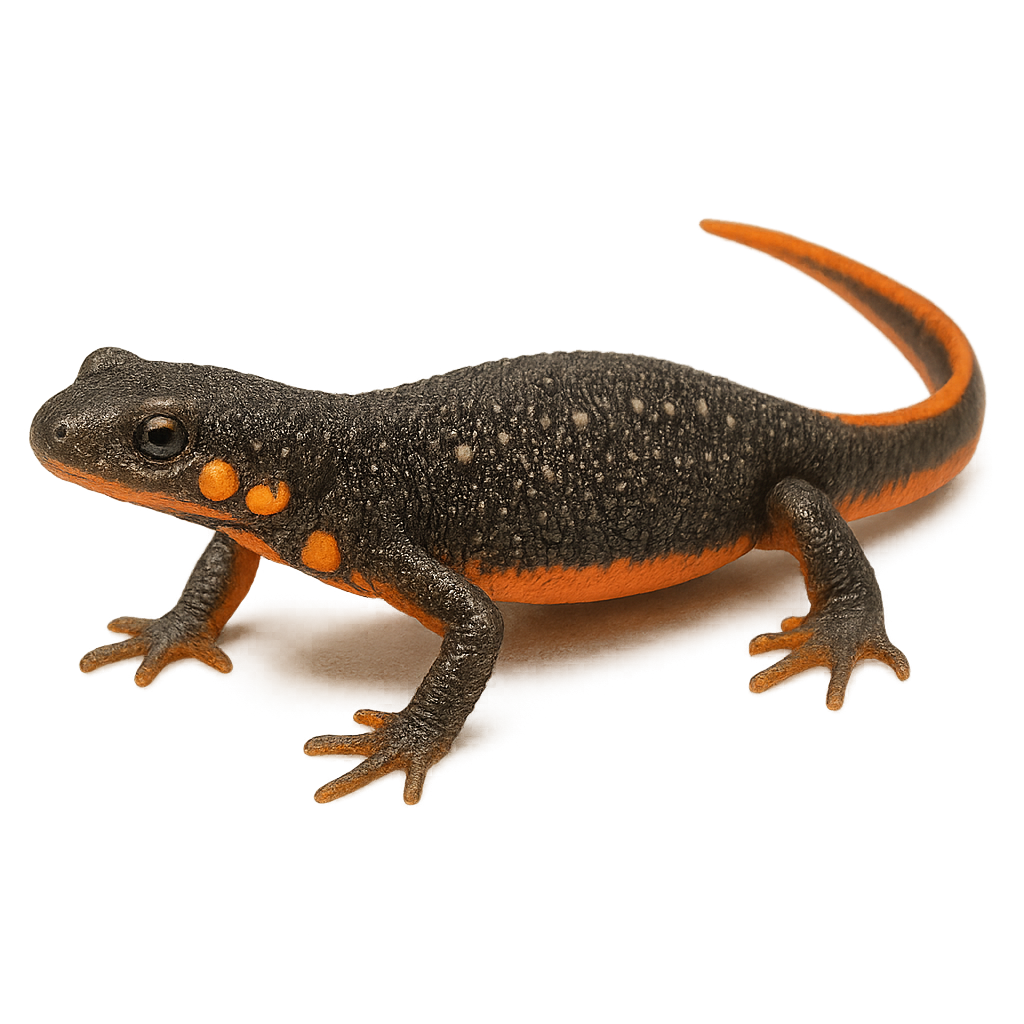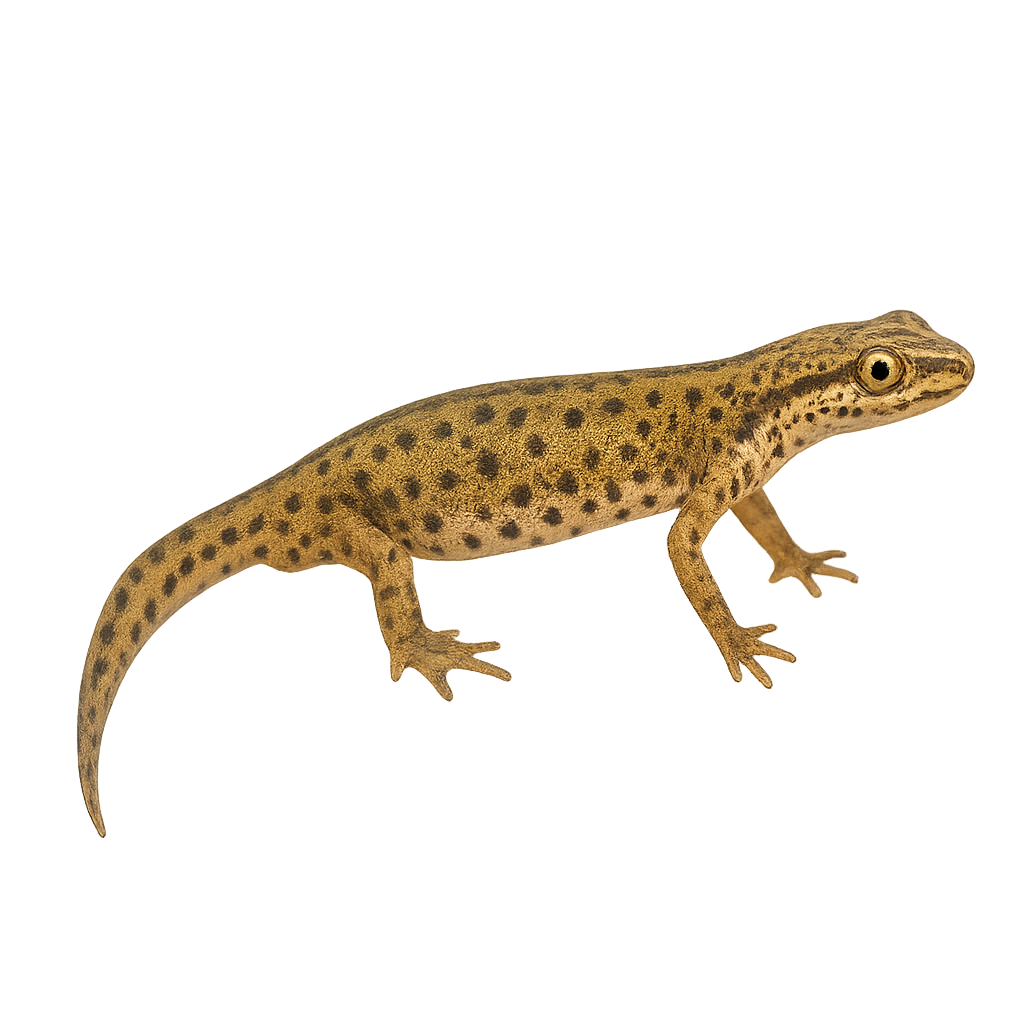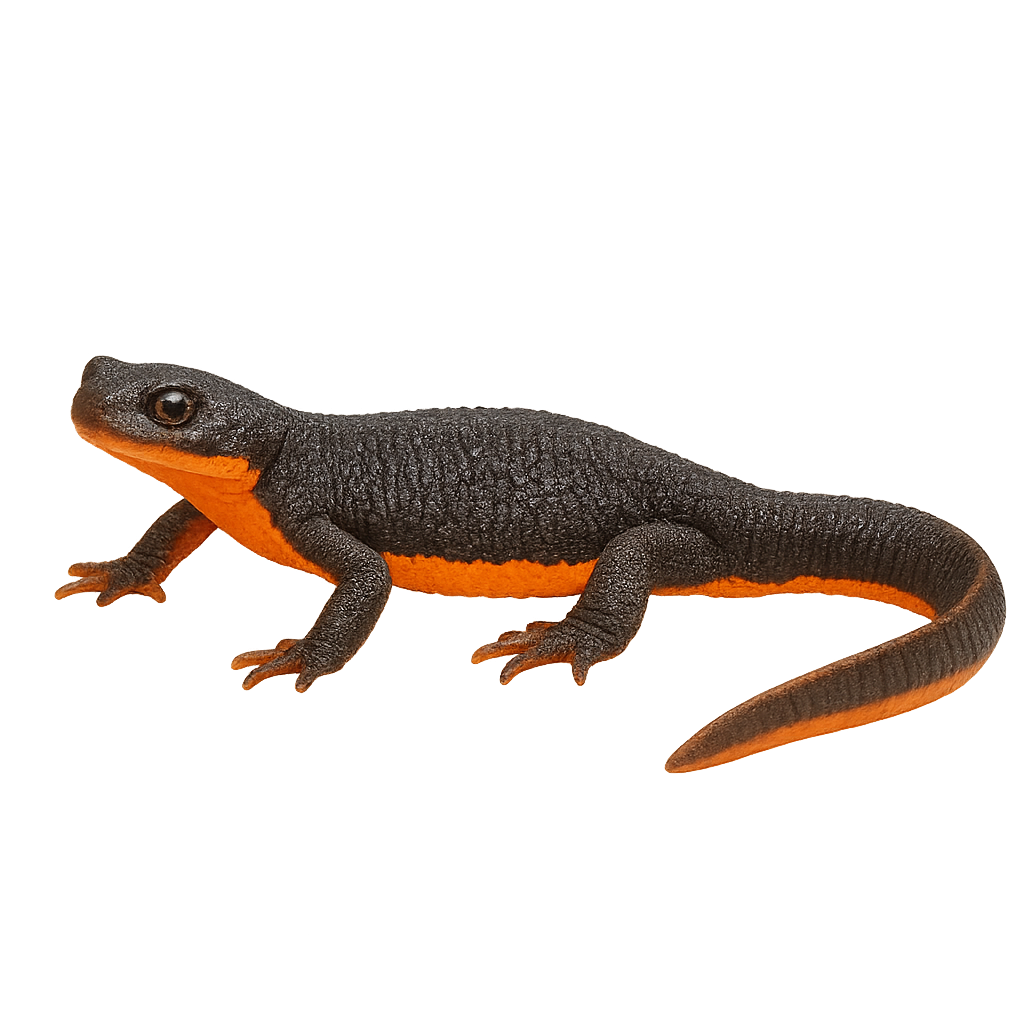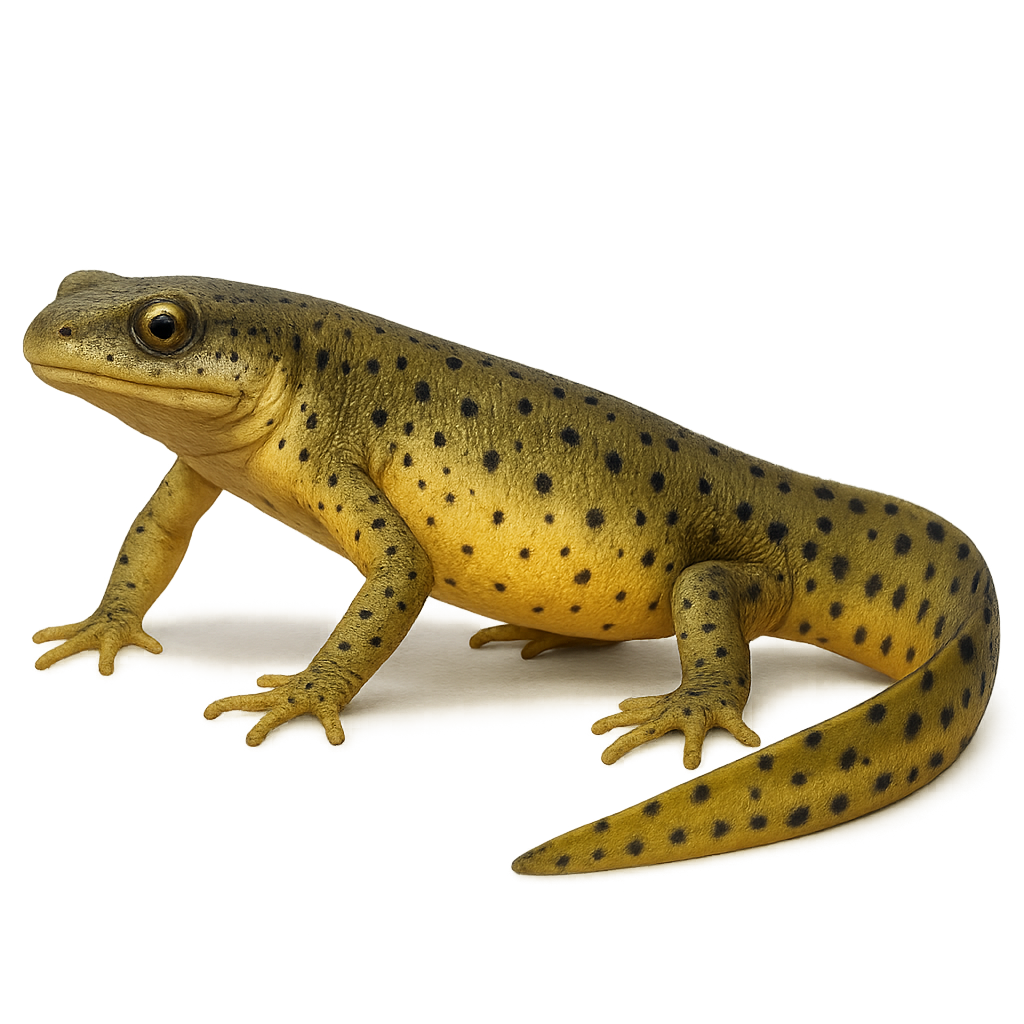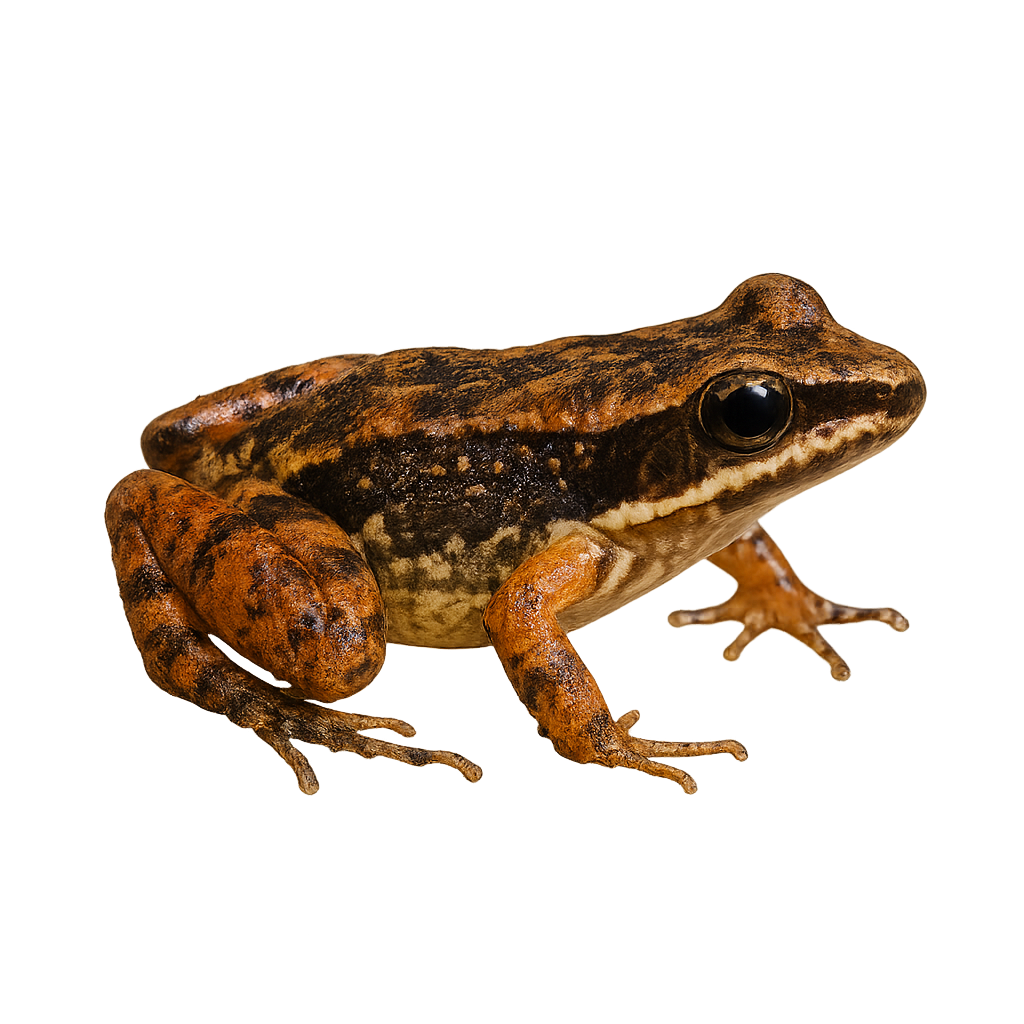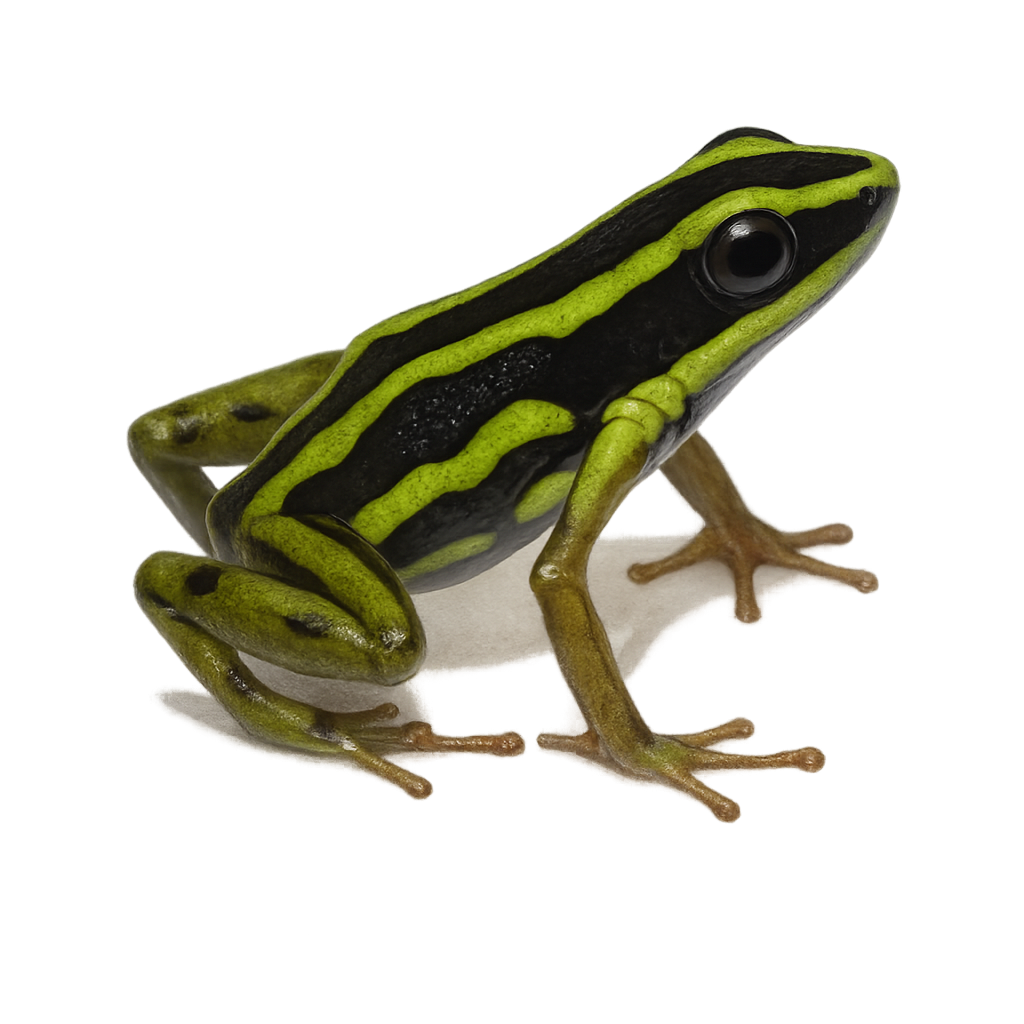The crested newt is a urodele amphibian, 9–11 cm long, with a dark brown back spotted with bright orange and a black belly. It inhabits temporary ponds, ditches, and woodland pools in temperate Europe, feeding on aquatic insects and small crustaceans with its rapid tongue. During the breeding migration, males develop a prominent dorsal crest and perform a nuptial dance in front of females.
The Italian Crested Newt, Triturus carnifex, is a species of newt in the family Salamandridae. It is characterized by its rough skin and prominent dorsal crest, especially visible in males during the breeding season. This newt typically measures between 10 and 16 cm in length. Its coloration ranges from brown to black, with lighter spots on the belly. It primarily inhabits wetlands, such as ponds and marshes, and is often found in nearby forests and grasslands. Although its population is stable, it faces threats from habitat destruction and water pollution.
The Japanese fire‐bellied newt is a medium‐sized aquatic salamander (10–12 cm body length), with a dark dorsum and bright red belly marked with black spots. Endemic to Japan, it inhabits ponds, forest pools and slow‐flowing streams, feeding on invertebrates, worms and small crustaceans. Gregarious and secretive, it performs tail‐fanning courtship displays and aggregates in sheltered bays during breeding.
The marbled newt, Triturus marmoratus, is a medium-sized amphibian, typically measuring between 12 and 15 cm in length. Its skin features a distinctive marbled green and black pattern, providing excellent camouflage in its natural habitat. Males display a striking dorsal crest during the breeding season. This newt is primarily found in humid forests, meadows, and wooded areas of Western Europe, particularly in France and Spain. It is nocturnal, hiding under stones or leaves during the day. Reproduction occurs in ponds or temporary pools. Although its conservation status is concerning, it remains relatively common in some areas.
The palmate newt is a small urodele amphibian, 6–9 cm long, with an olive-brown back dotted with dark spots and a yellow-orange belly. It inhabits temporary ponds, ditches, and woodland wetlands in temperate Europe. Solitary and unobtrusive, it feeds on aquatic insects and small crustaceans with its speedy tongue.
The Rough-skinned Newt, or Taricha granulosa, is a species of salamander found along the Pacific coast of North America. It is easily identified by its rough, grainy skin and dark brown coloration, with a bright orange underside. This newt is particularly famous for its potent toxin, tetrodotoxin, which deters predators. Typically measuring between 12 and 22 cm, it inhabits moist forests, streams, and ponds. During the breeding season, it migrates to still waters to lay eggs. Despite its toxicity, it plays a crucial role in the ecosystem by controlling aquatic insect populations.
The Notophthalmus viridescens, commonly known as the Eastern newt, is a small amphibian native to North America. It is characterized by its smooth, moist skin, typically green with distinctive red spots along its back. The Eastern newt undergoes several life stages, including an aquatic larval stage, a terrestrial juvenile stage known as the "eft," and an aquatic adult stage. These newts prefer aquatic habitats such as ponds, marshes, and streams but can also be found in moist forests during their terrestrial phase. They primarily feed on aquatic invertebrates and play a crucial role in the ecosystem by controlling insect populations.
The Truando rocket frog, or Colostethus latinasus, is a small frog belonging to the Dendrobatidae family. It is primarily found in lowland tropical rainforests in South America, particularly in Colombia and Venezuela. This species is characterized by its brown coloration with lighter patterns on the back and striped legs. It is generally active during the day and feeds mainly on small insects. Although discreet, it plays an important role in the ecosystem by regulating insect populations. Its reproduction is linked to the rainy seasons, when males emit calls to attract females.
The Yellow‑bellied poison frog, Andinobates fulguritus, is a small, brightly colored frog native to the humid tropical forests of Colombia. Known for its striking yellow and black patterns, its skin serves as a warning to potential predators due to its toxicity. This diurnal species spends most of its time foraging for small insects and arthropods. It prefers humid, shaded habitats, often near streams. Despite its small size, it plays a crucial role in the ecosystem by regulating insect populations. Reproduction typically occurs during the rainy season, with males calling to attract females.


